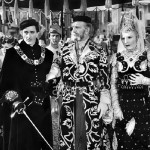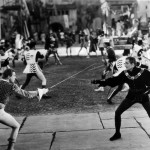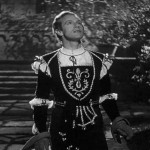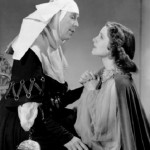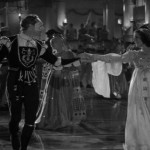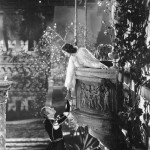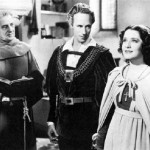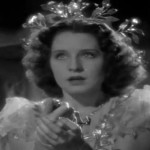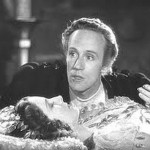
Romeo and Juliet – 1936
I’m sorry to say it, but this movie was pretty horrible. The costumes were almost comical, the casting was ridiculous, the directing was questionable and the acting was terrible. In this review, I can only list what I though was wrong, and then try to find some redeeming qualities that saved the movie from being a complete disaster.
Of course, Romeo and Juliet is probably Shakespeare’s most famous play, though Hamlet may give it a run for its money. The incredible story of the star-crossed lovers is wonderful if it is treated with care and respect. However, this adaptation, directed by George Cukor, treated it in a nearly farcical manner, turning its characters into pale imitations of Shakespeare’s original intent. Wikipedia says that about 65% of The Bard’s play was cut. How close to the original intent could it be?
First, one of the worst changes made was the addition of Peter, played by Andy Devine. Peter was Juliet’s Nurse’s servant. But he should have been named the village idiot. He played the part of a bumbling buffoon. He spoke slowly as if he had a mental handicap. He was supposed to be comic relief where none was needed. During the opening sword fight in the street, he is shown as being so incompetent that he couldn’t get his dagger out of its sheath. Ha-ha… What a moron he is! Good Grief!
Second, the crazy costumes were almost laughable. Everyone wore glittery, sparkly costumes that belonged in a circus, not on the streets of Verona. The men wore their tights, but they were the ones with one leg of a solid color, the other leg in stripes or checks. Benvolio wore a tiny sporran with glitter and tassels in the place where a codpiece might have gone. Lord and Lady Montague wore outrageous outfits that looked like they belonged in a bad sci-fi movie. Lord and Lady Capulet’s costumes belonged in a bad fantasy film. The Prince wore a five-spiked Romanesque helmet that unfortunately looked right at home with the rest of the circus costumes.
Third, I’ll go over the casting. Romeo was played by Leslie Howard, which would have been alright if Romeo was supposed to be in his late 30s. The “young” Juliette, played by Norma Shearer, wasn’t far behind him. Mercutio, played by John Barrymore, was portrayed as a swishy fop who wouldn’t stop talking. Tybalt was played by Basil Rathbone. He is just played as a one-note hot-head who is itching for a fight. Shearer’s acting felt stunted, like she was constantly on the verge of stumbling over the language, though she was very pretty.
There were a couple of choices that Cukor made that had me a little baffled. In the scene where we first meet Juliet, we see the young girl feeding her pet fawn. The little deer had a sparkly collar around its neck. Then as her mother begins speaking to her, we see that Juliet is holding a white bow and arrow. What?!? Why? Is the young Capulet practicing her archery? That deer better start running!
Later when Romeo kills Tybalt, Rathbone falls off a short ledge. When he hits the ground, he spreads his arms out to his sides, raises one knee and poses… even though he is already dead.
And one last thing. Believe it or not, this one is with Shakespeare’s original script. So, Juliet wakes up in the crypt. Romeo and Paris both lie dead on the floor. Friar Lawrence is there to greet her. He says that the Prince and the night watch are on their way. They have to be away so that he can get her to a nunnery. Juliet says “Go, get thee hence, for I will not away.” Did the Friar not think she might kill herself? Apparently not, or maybe he just didn’t care. We’ll never know. He leaves without another word.
So what did they do right? Well, they kept the basic story intact, which was the film’s biggest saving grace. You can rarely go wrong with Shakespeare. The nurse, played by Edna May Oliver, did a good job at staying true to the character. Friar Lawrence was good, for what screen-time he had. Apparently his part was greatly reduced from the original play. Really, I can’t think of any other mentionable compliments.
